Auctions
A Triumphant Basquiat and an Unexpected Norman Rockwell Help Boost Phillips to a Strong $108 Million Evening Sale
Meanwhile, French artist Julie Curtiss cements her place as a market darling.
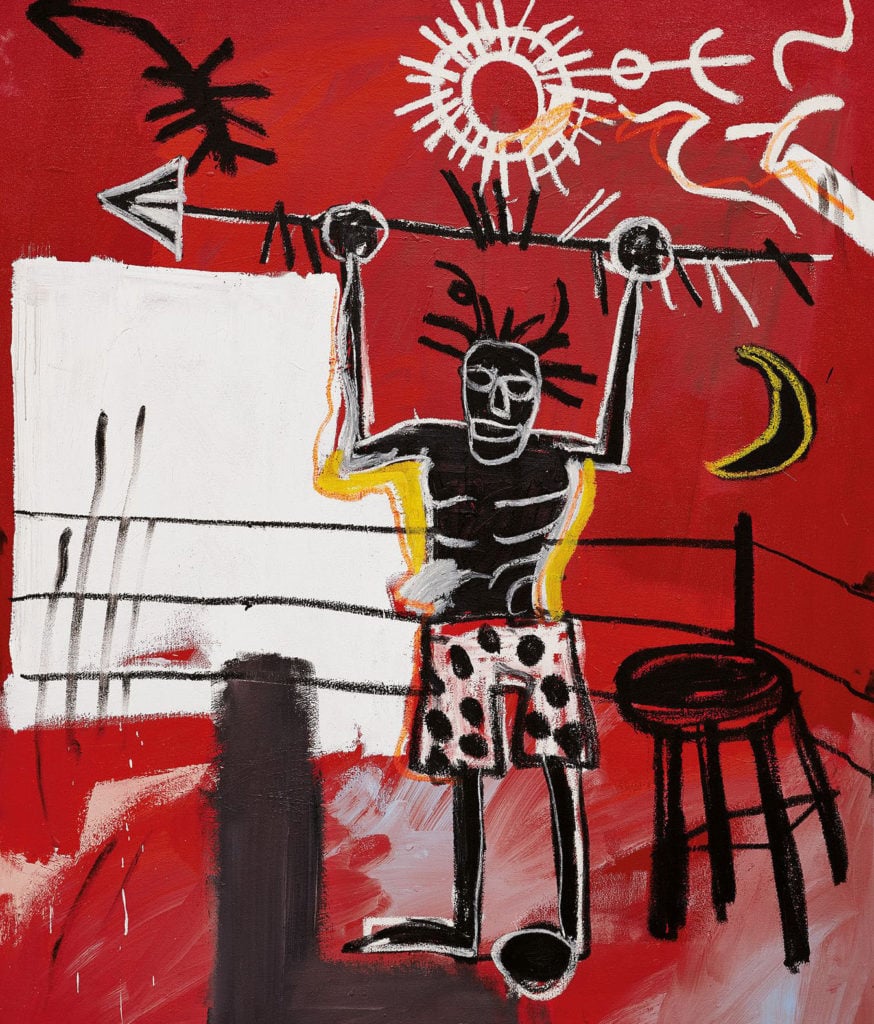
Meanwhile, French artist Julie Curtiss cements her place as a market darling.

Eileen Kinsella

Phillips evening sale of 20th-century and contemporary art tonight took in just over $108 million. That total was a healthy margin above the low $93 million estimate, but well under the upper end of expectations of $132 million in a night marked by consistent and solid—but rarely heated—bidding. Of 42 lots offered, the sale saw a robust sell through rate of 95 percent by lot (40 works sold) and 98 percent by value.
“We’re very focused on the market we’ve chosen to compete in,” said Phillips CEO Ed Dolman following the auction. “It’s important to keep our growth story going.” He noted a record $40 million day sale earlier today, compared with a $14 million result at the same sale just two years ago.
The evening sale results also marked a considerable improvement on last fall as well, when Phillips took in $88 million, falling short of the $100 million estimate with some major works failing to sell.
Phillips has long been the destination for newer, younger contemporary fare, but in recent years the auction house has been edging into Modern territory. This was reflected with what appeared to be a heavier focus on classic works by artists such as Joan Miró, Picasso, Giacometti, and, for the first time at one of its evening sales, a painting by Norman Rockwell that met with robust demand.
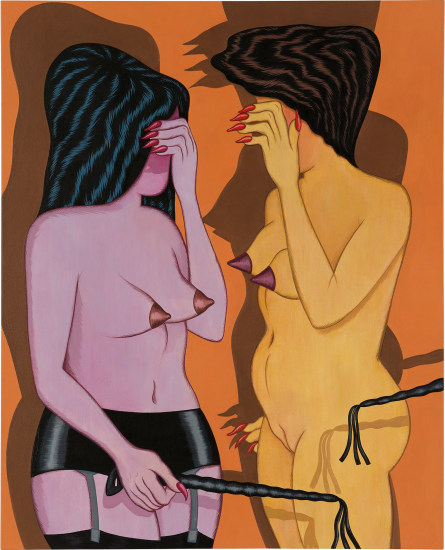
Julie Curtiss, Party Down (2016). Image courtesy Phillips.
Overall, the eclectic mix proved successful, considering that the house scored big with French artist (and current market darling) Julie Curtiss, who had the sale’s opening lot. Curtiss’s Party Down (2016) was estimated at $30,000 to $50,000, but it immediately leapt past that sum to land in the six figures. The hammer came down a few moments later at $320,000, with the work selling to a phone bidder for a final price with premium of $400,000, surpassing the artist’s previous high of $262,000 set just a month ago in London. (It looked like an artist record for Curtiss—but that honor actually went to Christie’s with the $423,000 for Pas de Trois, set moments earlier at the rival auction house’s day sale.)
Keep in mind, the artist’s auction track record is short—just eight lots have come to the auction block so far.
As expected, the highest-priced lot of the evening was Jean-Michel Basquiat’s The Ring (1981), a brilliant red painting that depicts a boxer—possibly Basquiat himself given the figure’s similarity to a different self-portrait—standing in the boxing ring with his fists raised and clutching a spear. The work sold for $15 million with premium, to a woman in the room, compared with an estimate of $10 million to $15 million.
As always, past auction results provide insight into the artist’s market trajectory. For Basquiat in particular, prices have soared. In 1999, The Ring sold for $442,500 at Christie’s Los Angeles. In 2012, it sold again, that time at Sotheby’s New York for $7.6 million against an estimate of $4 million to $6 million. Tonight, its value practically doubled again.

Norman Rockwell Before the Shot (1958). Image courtesy of Phillips.
The auction room came alive when the Norman Rockwell painting Before the Shot (1958) came on the block. Fresh from a three-year loan at the artist’s eponymous museum in Stockbridge, Massachusetts, the painting was estimated at $2.5 million to $4.5 million. Bidding opened at $1.7 million and at least four senior Phillips specialists chased it for respective clients on the phone. It finally sold to Phillips chairman Cheyenne Westphal, whose client won it with a final bid of $3.9 million bid, or $4.7 million with premium.
Following the sale, Westphal revealed that this classic piece of American art had been acquired by a collector typically focused on contemporary art. She boasted that the work came on his radar because of Phillips’s placement of the work in this auction.
Also a record—albeit by a slim margin—was the $1.76 million price achieved for a Sean Scully painting, Red Bar (2003-4), which was snapped up by an online Hong Kong bidder, against an estimate of $900,000 to $1.2 million. It just edged out the previous record of $1.7 set in Hong Kong last month.
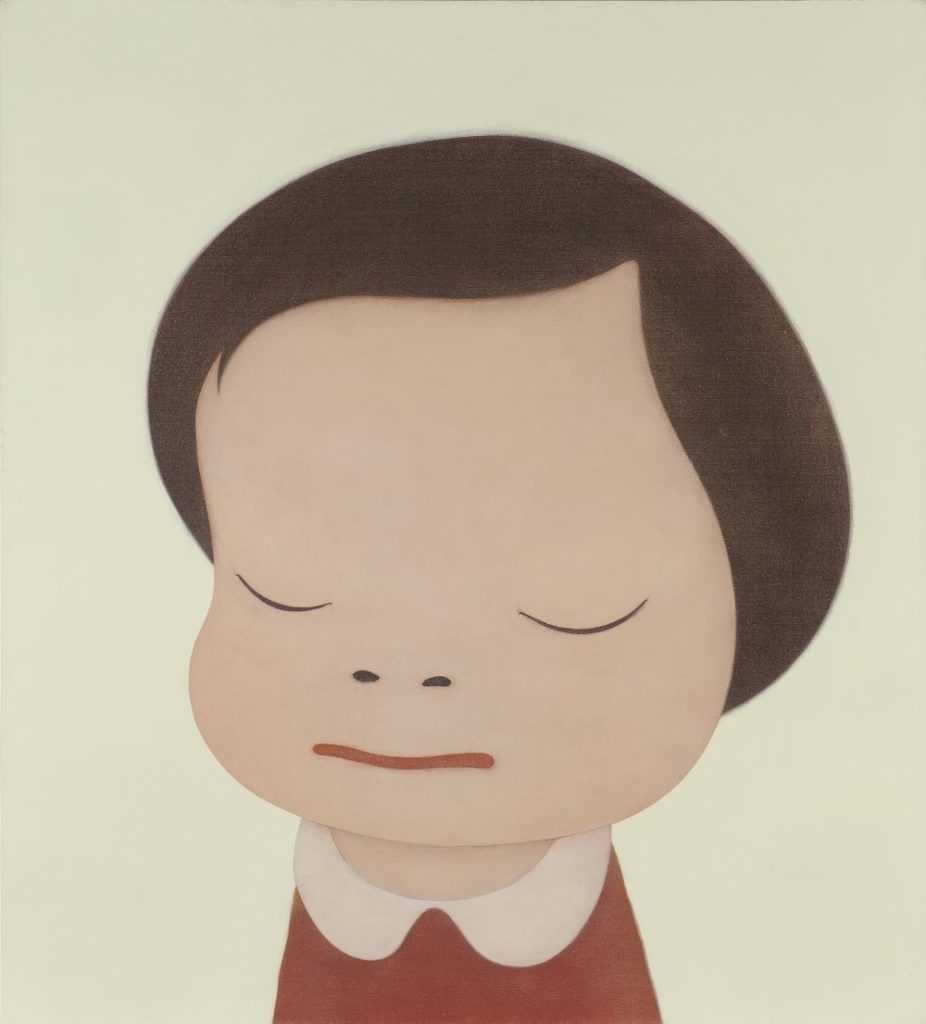
Yoshitomo Nara, Little Thinker (2000). Image courtesy Phillips.
Phillips’s sale had several works by artists who have been the target of auction competition bordering on market frenzy of late, such as Yoshitomo Nara and KAWS. For better or for worse, however, the frothy activity did not appear to carry over here tonight. Bidding was solid but not crazed.
For instance, just a month after intense bidding smashed the previous record for Nara and set a new high of nearly $25 million (the previous high was $5 million) at a recent Sotheby’s Hong Kong sale, Phillips offered Little Thinker (2000), one of the artist’s signature works of a little girl with eyes closed. Perhaps encouraged by the Hong Kong record, the auctioneer noted that estimates had been tweaked a bit higher, to $3.5 million to $4.5 million (from $3 million to $4 million). After just a few bids, it was hammered down right at the low estimate of $3.5 million, or just over $4 million with premium.
The Nara had been acquired shortly after it was executed in 2000, from Los Angeles-based Blum & Poe Gallery. It was in the collection of the same owner ever since.
Similarly, bidding for several works by KAWS was solid but not frenzied or speculative (that’s not necessarily a bad thing). GRRR (2008), a painting featuring a close-up of a Sponge Bob-like character with X’d out eyes, sold for a premium-inclusive $2.2 million compared with an estimate of $1.8 million to $2.5 million. And Final Days (2013), one of the artist’s signature wood sculptures, realized $1.46 million on an estimate of $1 million to $1.5 million. A third work, an untitled shaped canvas on panel, also estimated at $1 million to $1.5 million, sold for a final price of $1.2 million.
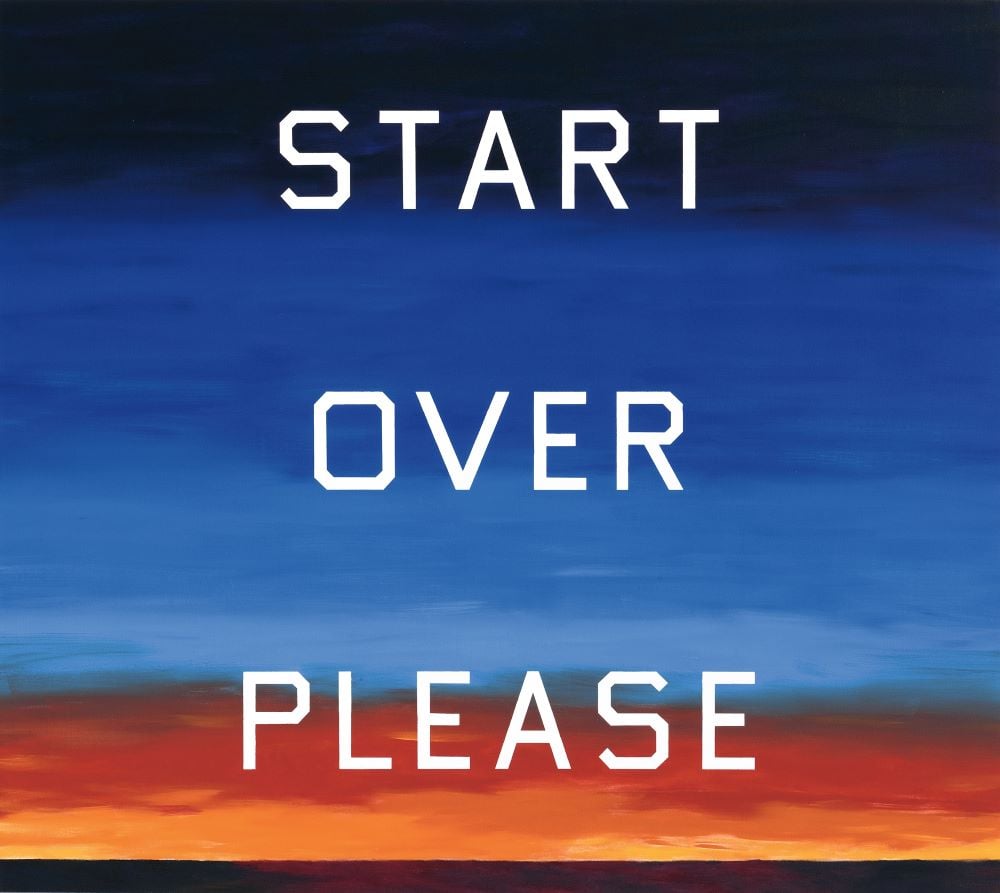
Ed Ruscha, Start Over Please (2015) Image courtesy of Phillips.
Just one night after Christie’s set a new record of $52.5 million for Ed Ruscha’s Hurting the Word Radio (1964), his more recent 2015 painting Start Over Please, with the title words imposed in white over sunset-like blue and orange hues, was offered at Phillips tonight. Against an estimate of $3.5 million to $4.5 million, it was hammered down to a phone bidder for $3.5 million, or $4.2 million with premium.
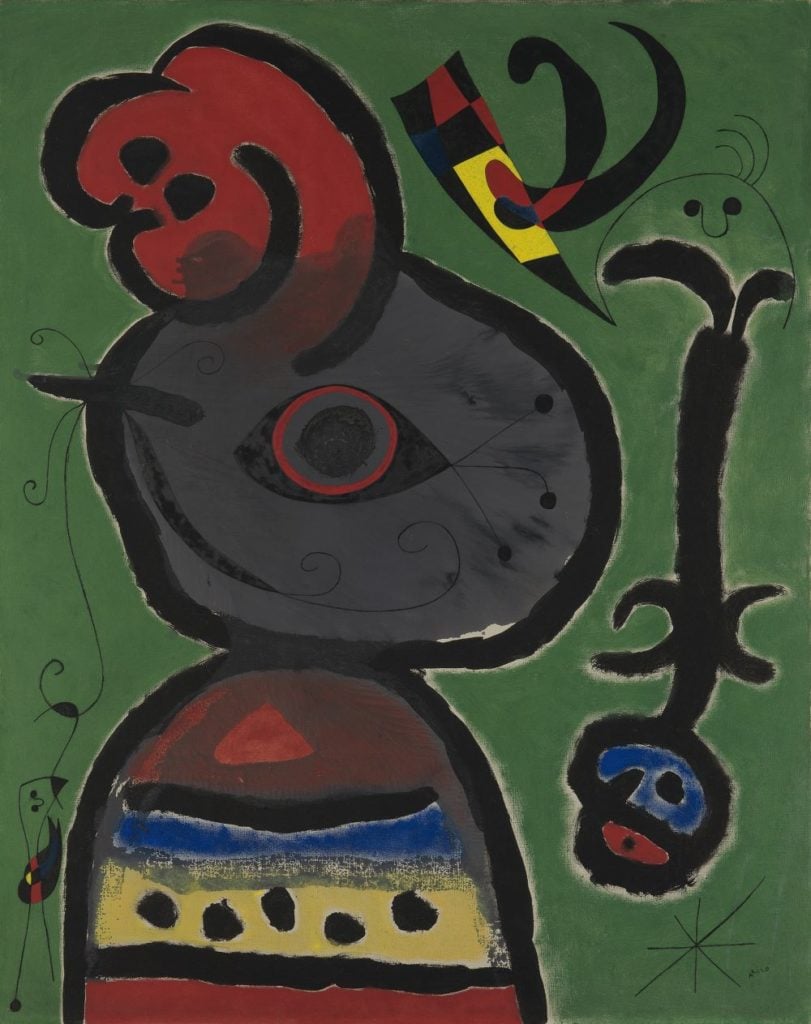
Joan Miró, Paysan catalan inquiet par le passage d’un vol d’oiseaux (1952) Image courtesy of Phillips.
One expected highlight of the evening was a Joan Miró painting, Paysan catalan inquiet par le passage d’un vol d’oiseaux (1952), which had not been shown in over six decades. It was last seen in 1953 as a highlight of a major postwar survey at Galerie Maeght in Paris and Pierre Matisse Gallery in New York. However, bidding was lackluster. The work sold for $4.5 million, well below the low $7 million estimate.
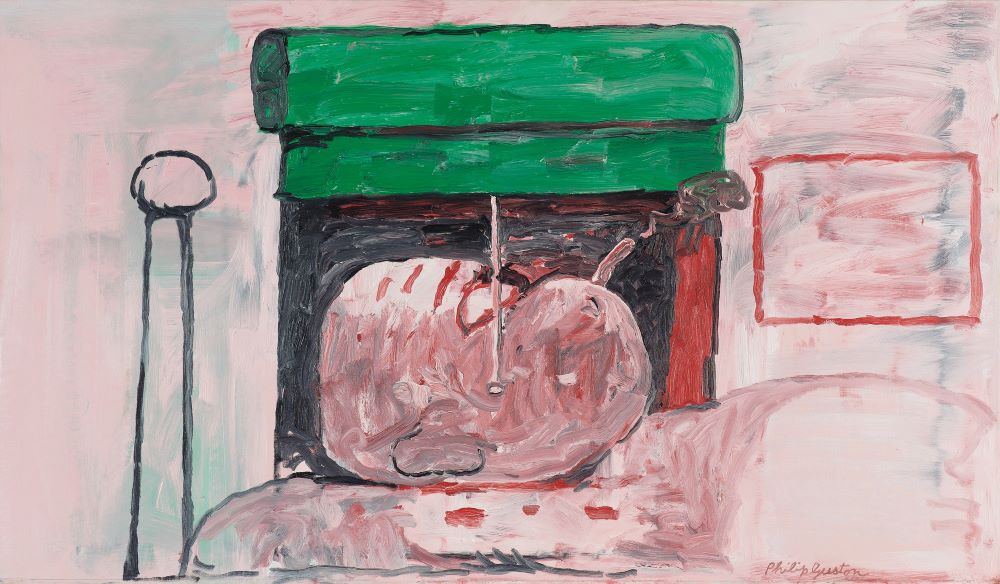
Philip Guston, Smoking II (1973. Image courtesy of Phillips.
Meanwhile Philip Guston’s Smoking II (1973), one of the artist’s semi-figurative self-portraits, sold for $7.6 million. It was one of several works estimated with an identical range of $6 million to $8 million, but nevertheless marked the second-highest price of the night.
Andy Warhol’s Late Four Foot Flowers (1967), estimated at $6 million to $8 million, also made $7.4 million with premium—the third highest price of the night.
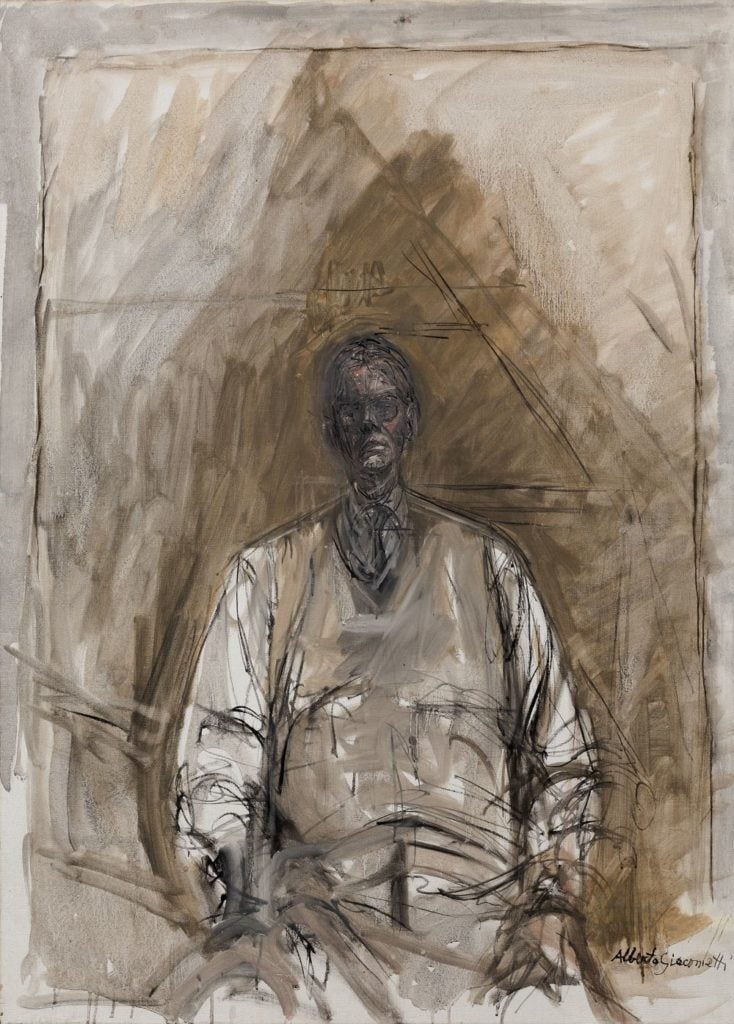
Alberto Giacometti, Portrait of G. David Thompson (1957) Image courtesy of Phillips.
Giacometti’s Existentialist portrait of American businessman G. David Thompson, his most dedicated patron, had never been offered at auction before. It sold for a below-estimate price of $4.2 million, compared with expectations of $6 million to $8 million. The underbidder was London dealer Hugh Gibson, who lost out to a phone bidder represented by Phillips specialist Jamie Niven.
Richard Diebenkorn’s Berkeley #66 sold for $3.5 million with premium, compared with an estimate of $3.5 million to $4.5 million. Last offered at auction at Christie’s New York in May 1995, it sold for $285,500.
Among the notable buyers spotted in the salesroom was dealer Thaddaeus Ropac. He snapped up James Rosenquist’s Highway Temple (1979) on a hammer price of $600,000, or $740,000 with premium. The estimate had been $600,000 to $800,000, so it went right in the middle of the range.